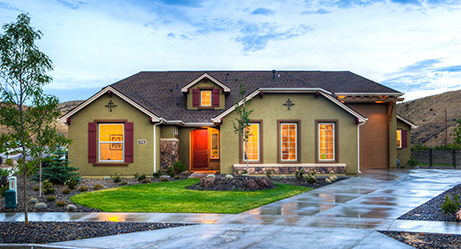
Building Inviting Spaces: Campus Painting Insights
A good paint job can help transform any school campus into a more inviting and functional place.
Paint is more than decoration. In a school environment, the right colors and finishes help support focus, safety, and comfort. From the classrooms to the exterior walkways, paint affects how people feel and how the space works.
This article provides valuable tips for schools in Virginia on how to utilize painting to enhance their campuses for learning, connection, and safety.
Campus Painting Tips for Creating Welcoming Spaces
1. Use school colors to build identity and unity
Colors help shape the mood of a space, but they also show school pride. Many campuses in Virginia use their school colors throughout the property—on doors, signs, lockers, and walls. This helps everyone feel a sense of unity.
To achieve the best results, use the primary school colors in visible areas, such as entryways, gyms, and hallways. Accent walls in classrooms or administrative spaces are also a good way to include colors without overdoing it.
2. Choose calm colors in classrooms to support focus
Specific colors can evoke a sense of relaxation in people, while others may be too bright or distracting. Classrooms and study areas should be painted in soft, neutral tones. These include colors like beige, pale blue, and light gray.
Avoid using very bright colors, such as red or orange, in learning spaces. These can be overwhelming and divert attention away from what is being taught. Color choice is a small detail that can make a big difference in how students concentrate.
3. Pick durable paint finishes for busy areas
Some parts of a school campus are in constant use throughout the day. These include hallways, staircases, entrances, and cafeterias. Due to the continuous foot traffic, paint in these areas needs to withstand wear and tear.
Paint with a satin or semi-gloss finish is often a good choice for these areas. These finishes are easy to clean and resist scuffs and marks. It also saves money in the long run because you don’t need to repaint as often.
4. Use color zoning to separate areas by function
Every school has different zones, like classrooms, offices, and lounges. Using specific color themes for each area helps students and staff navigate more easily. For example:
- Classrooms: Soft neutral tones
- Offices: Calm, professional colors
- Cafeterias: Warm but not too bright
- Lounges or student centers: More energy with brighter tones
- Libraries or study rooms: Cool colors that encourage quiet
5. Keep outdoor surfaces clean and protected with the right products
The outside of your campus is the first thing visitors see. However, in Virginia, the weather can quickly wear down building exteriors. Sun, rain, wind, and snow all affect paint.
Use weatherproof paint for outdoor buildings, signs, and fencing. Choose a trusted brand and apply a proper primer underneath. This helps the paint stick better and last longer. Pressure washing before painting also improves the final look and lifespan.
6. Add safety and direction with painted markings
Painting can also help keep people safe on campus. Stair edges, exit doors, ramps, and crosswalks often need clear markings. In some cases, schools may need to adhere to specific safety codes regarding painted signs or directional lines.
Use reflective or high-contrast paint where needed. In slippery or dark areas, non-skid or glow-in-the-dark paints may also be helpful. A professional painter will know what materials are best based on where the markings are placed.
7. Schedule painting projects during school breaks
Painting can be disruptive if done while students and teachers are in the building. The smell, noise, and restricted access can create issues with comfort and safety.
Plan big painting jobs during summer, winter break, or even over a long weekend. For more minor updates, evening work or section-by-section painting may be possible. The right contractor will work around the school calendar.
8. Keep up with maintenance to extend the life of your paint
Even with good materials and skilled work, paint doesn’t last forever. Busy campuses may need touch-ups after just a year or two. It’s best to set up a maintenance plan so walls don’t end up looking worn or dirty.
Focus on high-use areas first, such as hallways, restrooms, and entrance doors. Quick spot painting or wall washing can keep things looking fresh between full repaints.
Thinking about doing the same for your home? Learn more about our Virginia house painting options.
9. Work with painters who understand Virginia’s climate and school needs
Painting a school is not the same as painting a house. That’s why it’s helpful to work with local experts who understand the unique needs of educational buildings and the specific climate of Virginia.
Parmer and Sons is a trusted painting service serving schools, colleges, and organizations across the region. We use high-quality materials, follow all safety guidelines, and work on your schedule to reduce any disruption.
Our team provides:
- Indoor and outdoor campus painting
- Color matching and finish consulting
- High-traffic area protection
- Safety and ADA-compliant striping
- Regular maintenance and touch-ups
Final thoughts
Campus painting is not just about looks. It’s about creating a space where students, teachers, and staff feel welcome, safe, and focused. From the classrooms to the sidewalks, each surface plays a role in how the space works. With thoughtful planning and the right team, schools in Virginia can create long-lasting, inviting environments through the use of paint.


